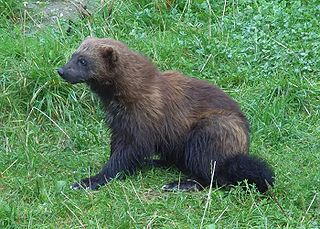
The wolverine, also referred to as the glutton, carcajou, or quickhatch, is the largest land-dwelling member of the family Mustelidae. It is a muscular carnivore and a solitary animal. The wolverine has a reputation for ferocity and strength out of proportion to its size, with the documented ability to kill prey many times larger than itself.

The Eurasian lynx is one of the four extant species within the medium-sized wild cat genus Lynx. It is widely distributed from Northern, Central and Eastern Europe to Central Asia and Siberia, the Tibetan Plateau and the Himalayas. It inhabits temperate and boreal forests up to an elevation of 5,500 m (18,000 ft). Despite its wide distribution, it is threatened by habitat loss and fragmentation, poaching and depletion of prey.

Founded in 1875, the Buffalo Zoo, located at 300 Parkside Ave in Buffalo, New York, is the seventh oldest zoo in the United States. Each year, the Buffalo Zoo welcomes approximately 400,000 visitors and is the second largest tourist attraction in Western New York; second only to Niagara Falls. Located on 23.5 acres (9.5 ha) of Buffalo's Delaware Park, the zoo exhibits a diverse collection of wild and exotic animals, and more than 320 different species of plants. The zoo is open year-round.

Connecticut's Beardsley Zoo, located in Bridgeport, Connecticut, is the only Association of Zoos and Aquariums (AZA)-accredited zoo in the state of Connecticut. The zoo includes one of the few carousels in the state. The zoo has around 500 animals, from over 100 species, and welcomes about 280,000 visitors a year.
Port Lympne Hotel & Reserve near the town of Hythe in Kent, England is set in 600 acres (2.4 km2) and incorporates the historic Port Lympne Mansion, and landscaped gardens designed by architect Sir Herbert Baker, for Sir Philip Sassoon.
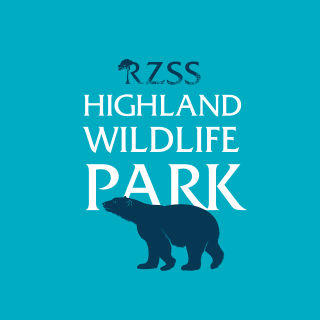
The Highland Wildlife Park is a 105-hectare (260-acre) safari park and zoo near Kingussie, Highland, Scotland. The park is located within the Cairngorms National Park. The park is run by the Royal Zoological Society of Scotland and is a member of the British and Irish Association of Zoos and Aquariums (BIAZA) and the European Association of Zoos and Aquaria (EAZA).
National parks of Azerbaijan are run by the Ministry of Ecology and Natural Resources in the Republic of Azerbaijan. The first national park established was Zangezur National Park in 2003. Since then a further 9 national parks have been established; the most recent being the Gizilaghaj National Park in 2018.
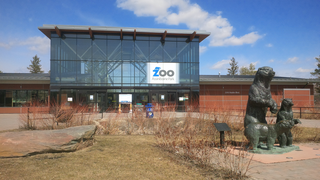
Assiniboine Park Zoo is an 80-acre (32 ha) zoo at the west end of Assiniboine Park in Winnipeg, Manitoba, Canada. It has been best known for decades for its polar bear exhibit, of which the old enclosure was replaced in 2013 with Journey to Churchill.

Shanghai Zoological Park, or commonly Shanghai Zoo in short, is the main zoological garden in Shanghai. It is located near the township of Hongqiao and is administratively in Changning District. Shanghai Zoo was formerly known as " Xijiao Park", which is still a common name used locally for the zoo.

The wildlife of Armenia includes, in addition to plants, wild boars, porcupines, various lizards, snakes and numerous species of birds. Endangered species living in Armenia are the Caucasian bear, Caucasian bearded goat, the Armenian mouflon (sheep) and the leopard.

Kolmården Wildlife Park is a zoo that opened in 1965 overlooking Bråviken bay in Sweden. It is the largest zoo in Scandinavia, includes the first dolphinarium in Scandinavia, which opened in 1969 and has daily shows, and the world's first cable car safari. The wildlife park also has a birds of prey display and a seal show. In the Marine World area is a roller coaster called "The Dolphin Express". Another, larger, roller coaster in the park is Wildfire.
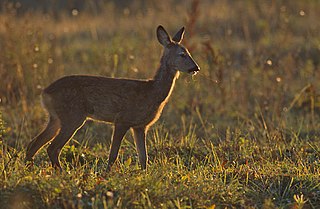
Estonia is a small, heavily forested country situated on the Baltic Sea. It is a part of the Euro-Siberian region of terrestrial Palearctic realm, and the Temperate Northern Atlantic marine ecoregion.

Bristol Zoo Project, formerly known as Wild Place Project, is a wildlife conservation park in North Bristol, United Kingdom. It is run by Bristol Zoological Society (BZS) and was the sister site of Bristol Zoo Gardens until closure of that site in 2022. In summer 2023, Wild Place Project rebranded as "Bristol Zoo Project" following the transition of Bristol Zoo Gardens from their Clifton site.

The Lüneburg Heath Wildlife Park is a wildlife park near Nindorf in the municipality of Hanstedt in the north German state of Lower Saxony. The park is home to around 1,000 animals of over 120 species in an area of 61 hectares. The park is open all year.

The Yorkshire Wildlife Park is a zoo, wildlife conservation and rehabilition centre and tourist attraction located in Branton, south-east of Doncaster, South Yorkshire, England. It opened in 2009 on the site of Brockholes Farm, a former riding school and petting zoo, and features 500 animals of 100 species. Yorkshire Wildlife Park is an official member of the British and Irish Association of Zoos and Aquariums (BIAZA) and the European Association of Zoos and Aquaria (EAZA).
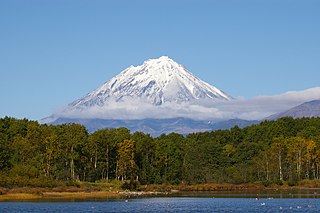
The wildlife of Russia inhabits terrain that extends across 12 time zones and from the tundra region in the far north to the Caucasus Mountains and prairies in the south, including temperate forests which cover 70% of the country. Russia's forests comprise 22% of the forest in the world as well as 33% of all temperate forest.
The Zoo In Forest Park and Education Center, also known as the Forest Park Zoo, is a nonprofit zoo situated in Forest Park, Springfield, Massachusetts. It spans an area of four acres and is home to a variety of exotic, native, and endangered species.

Montenegro is the smallest Balkan nation in population and second smallest in land mass. The land mass is 13,812 square kilometres with 360 square kilometres of water. Montenegro's geography ranges from mountainous forested regions in the north where larger mammals are most common. Mediterranean coastline makes up the south end of the country, forested area makes up 40.4% of the nation's landmass. The most densely populated area of the country is the south coast and the most sparsely populated is the north east section of the country. The fauna of Montenegro is predominantly shared with surrounding Balkan nations.

Skole Beskids National Nature Park covers the Skole Beskids Range of the Carpathian Mountains on the western edge of Ukraine. It was created in 1999 to protect the beech and beech-fir forests of Carpathians, and to provide for environmental, ecological, aesthetic, educational and recreational uses. The park is in Stryi and Drohobych Raions in Lviv Oblast.




















